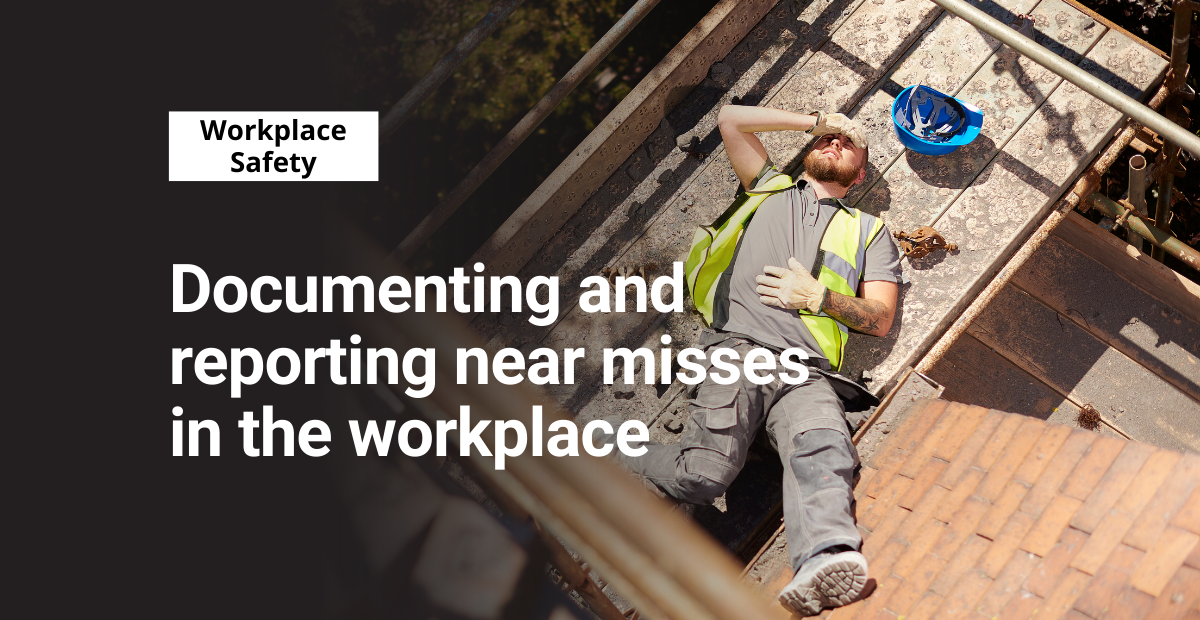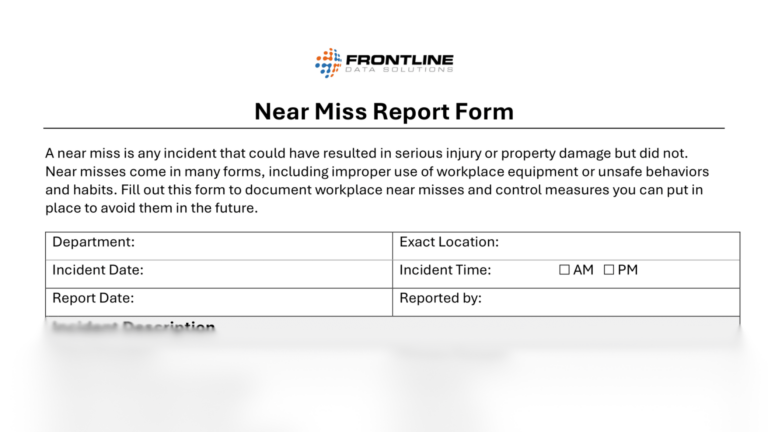A near miss is an unplanned event that has the potential to cause but does not result in a human injury, environmental or equipment damage, or an interruption to normal operation. Documenting near misses in the workplace is essential to preventing injuries in the future.
While you don’t have to document these incidents, doing so can drastically improve your incident rates. Additionally, it helps manage near misses in the work environment.
Proactively identify risk to prevent near misses in the workplace
The first step of recording near misses is to do a job hazard analysis (JHA). During this process, you’ll identify and evaluate hazards related to each job in your processes. Identifying possible hazards before performing the task can help eliminate risks. It also brings focus on the proper procedures when performing the job.
The second step is having employees identify and evaluate any unsafe conditions in their work locations. Set an example to make safety a focus at the beginning of each workday. This proactive approach is crucial to managing near misses that occur in the workplace.
The third step is to investigate and record all near misses and accidents. Training is a key factor in helping your employees recognize the root cause of the incident. Keeping records of all incidents and accidents will help your safety team in analyzing tendencies. These tendencies can involve outdated policies, work procedures, defective equipment, and unsafe practices.
Best practices for reporting near misses in the workplace
Does your company have a hazard reporting program? Basically, any employee that knows of any potentially unsafe workplace situation must be provided with the correct way to report it. This is especially crucial in cases of near misses in the workplace.
Reporting an incident helps management plan ways to correct the situation. Then, the potential for injury can be eliminated, or a change in performing a specific job task can be made safer with new procedures in place. If a near miss is just ignored, then the potential for a serious accident is increased for the future.
Importance of documenting incidents and near misses
Documenting all incidents, including near misses in the workplace, can allow your workplace to track patterns and realize trends. Correcting any unsafe practices should be the goal of the safety team. Completing incident reports can help a company protect itself from undue lawsuits.
With no documentation, there is nothing a company can do to defend what occurred. Documentation is one of the most important tasks a company can do.
Documenting every incident, accident, or situation on the job can help everyone in the company. This includes management, who creates workplace policy, and the safety team, who advise both management and create and instruct safety training for all employees.
Without documentation and investigating each incident you are increasing the risk of a serious accident every day.
The health and safety of all employees should be the number one focus for a company. Injuries and accidents affect the bottom line and could potentially decrease a company’s profit capabilities.
If an OSHA recordable incident occurs, the company could face stiff penalties. Their safety ratings could be lowered. This may cause customers to give jobs to other companies that can offer a better safety rating. Reporting, investigating, and documenting near misses in the workplace helps ensure that your EHS policies are effective.




